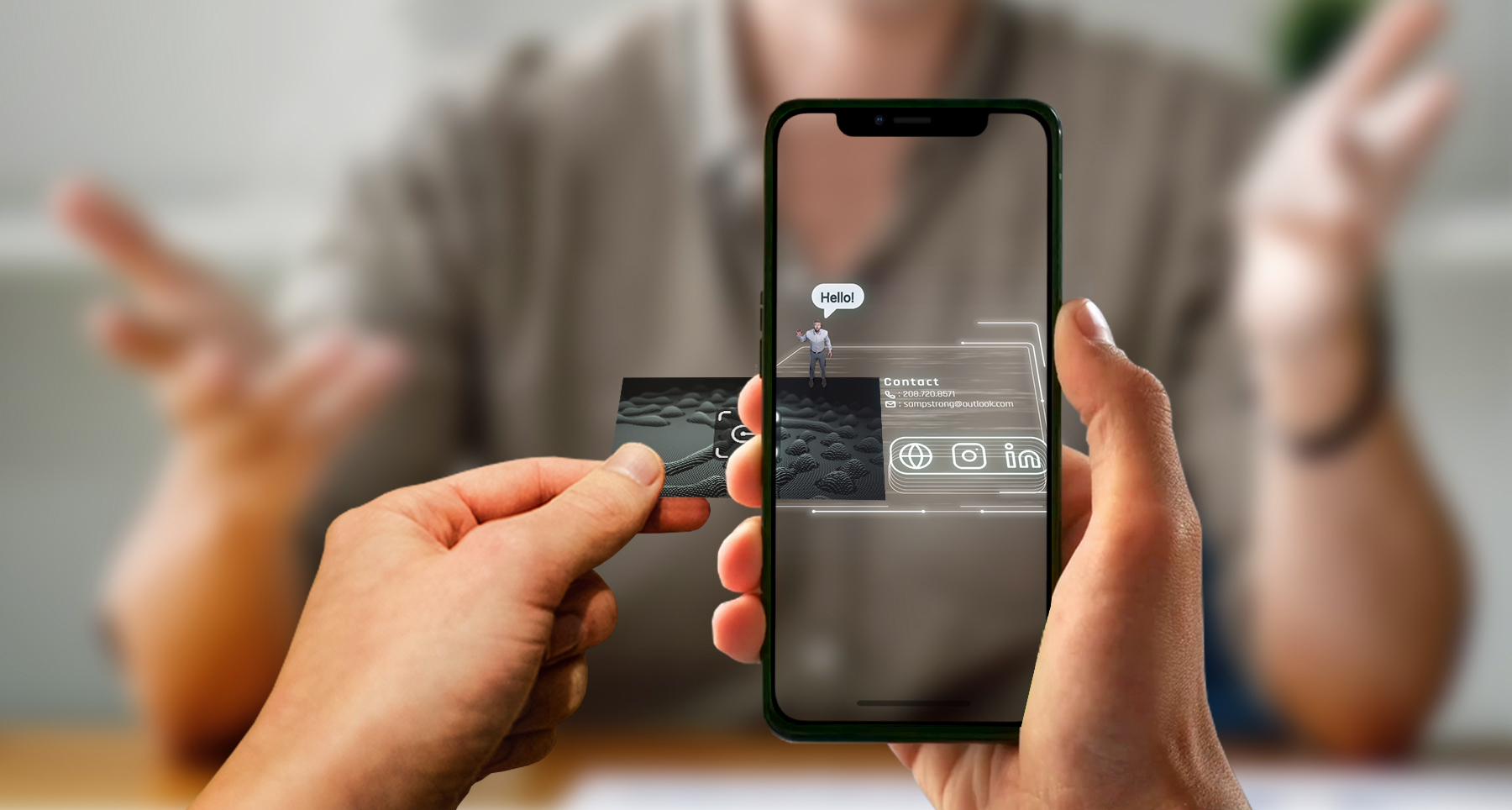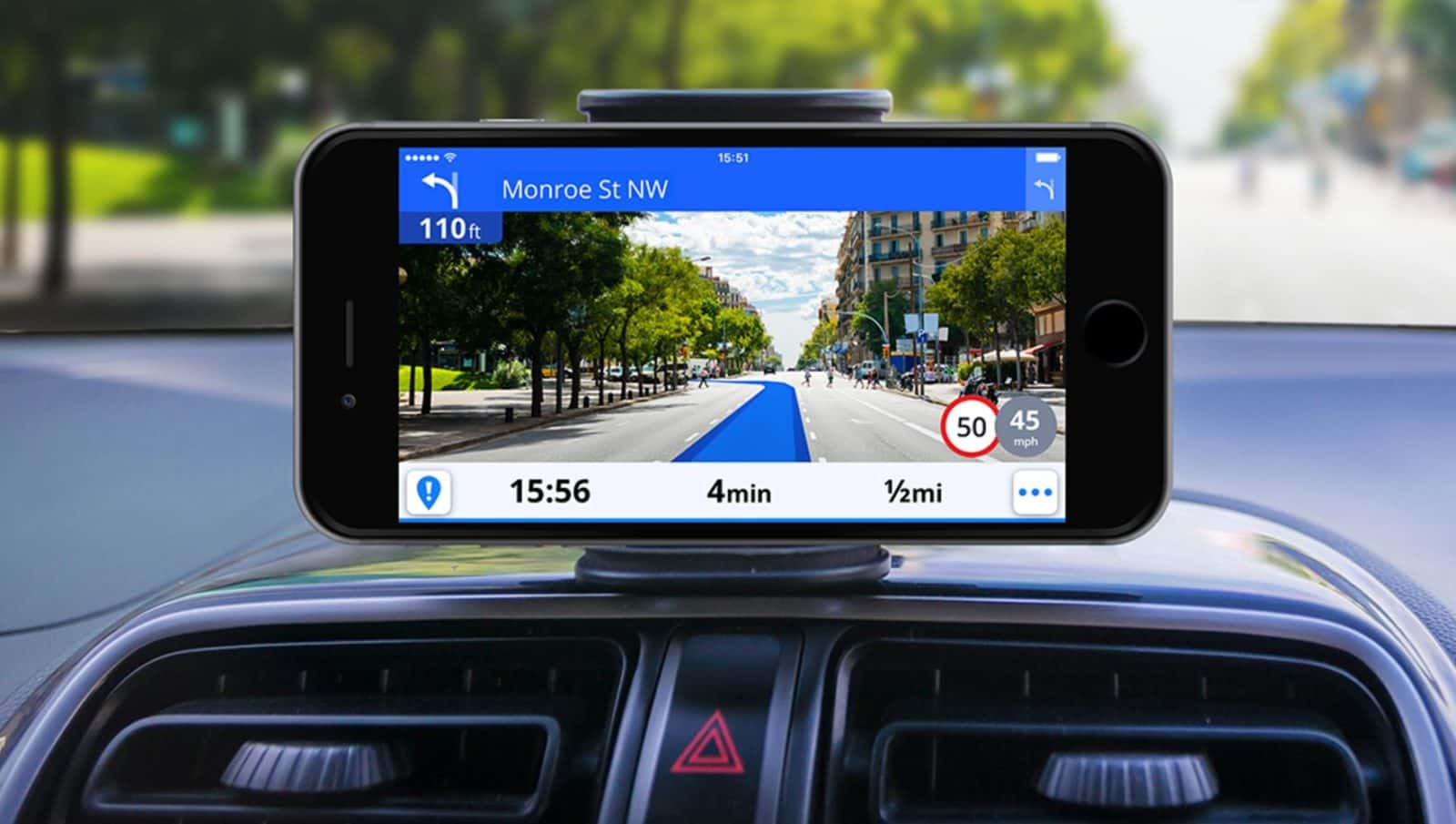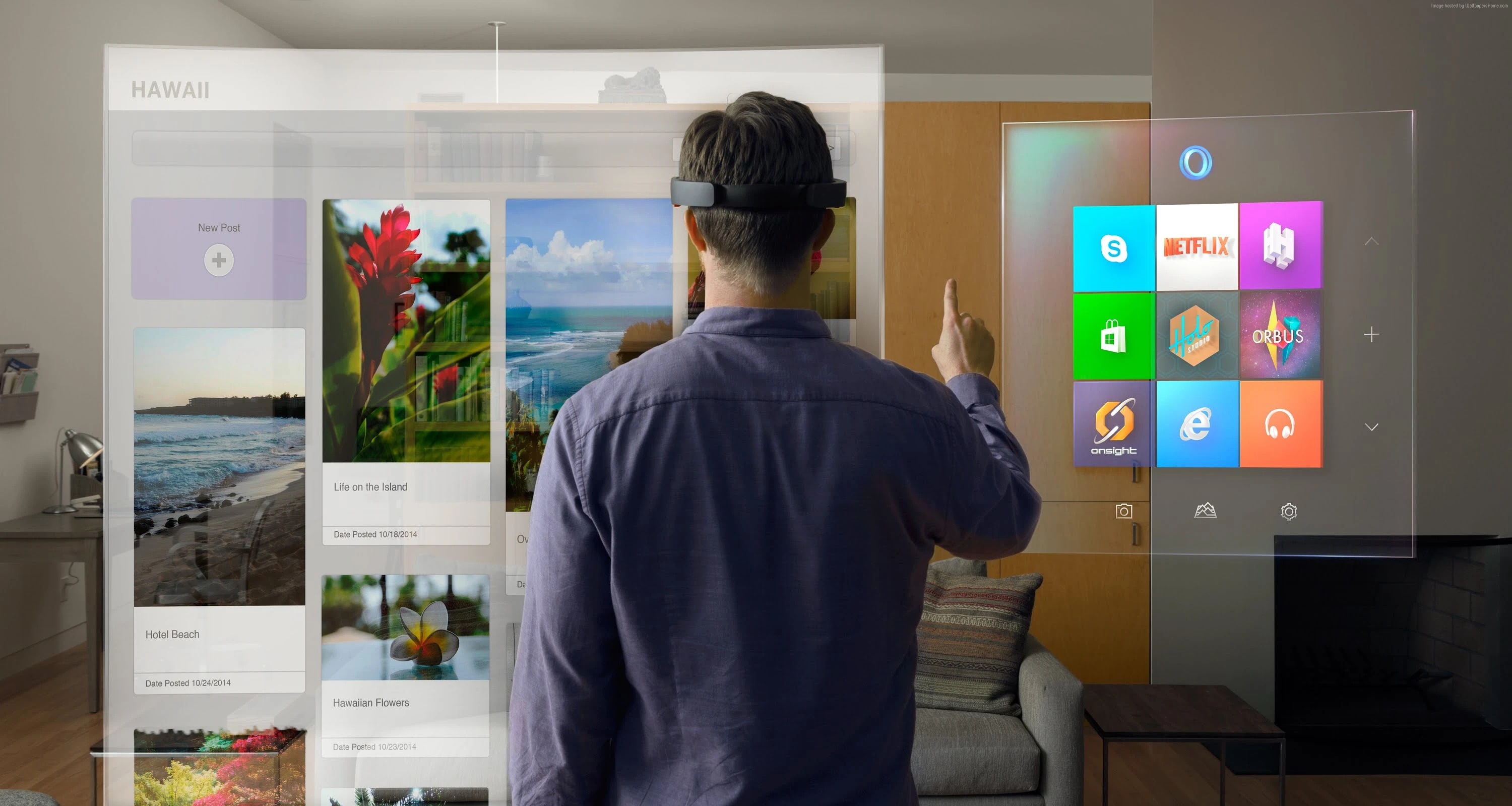Introduction
Augmented reality (AR) has emerged as a powerful tool in the business world, revolutionizing the way companies operate and interact with their customers. By overlaying digital information onto the real world, AR enhances our perception and interaction with the environment, creating immersive and interactive experiences.
AR technology provides businesses with unique opportunities, allowing them to showcase products and services in engaging and innovative ways. From marketing and advertising to training and collaboration, AR is being utilized across various industries to enhance productivity, improve customer experiences, and drive growth.
With the increasing accessibility of AR applications and devices, businesses of all sizes are tapping into the potential that this technology offers. This article explores some of the key ways in which AR is being used in businesses today, highlighting its impact on marketing, customer experience, product development, training, data visualization, and collaboration.
With the rapid advancements in AR technology and its increasing integration into our daily lives, businesses must adapt and leverage these tools to stay ahead of the competition. Let’s dive into the different applications of augmented reality in businesses and discover how it is transforming industries across the globe.
Enhancing Marketing and Advertising
AR technology has revolutionized the way companies market and advertise their products and services. By leveraging augmented reality, businesses can create interactive and immersive experiences that captivate their target audience and drive engagement.
One of the key advantages of using AR in marketing and advertising is its ability to enable customers to visualize products in a realistic and personalized way. AR applications allow users to virtually try on clothing and accessories, visualize furniture in their homes, or even see how a new car would look in their driveway. These experiences not only enhance the customer’s shopping experience but also increase their confidence in making purchase decisions.
AR can also be used to create interactive advertising campaigns that grab the attention of consumers and leave a lasting impression. By placing virtual objects or characters in real-world environments, businesses can create memorable and shareable experiences that generate buzz and brand awareness. Imagine walking through a mall and seeing virtual characters dancing or a branded object floating in mid-air. These creative and interactive experiences engage customers on a deeper level, fostering a strong connection between the brand and the consumer.
Furthermore, AR can provide valuable data and insights to marketers. By tracking user interactions and behaviors within an AR experience, businesses can gather valuable information about customer preferences, interests, and engagement levels. This data can be used to refine marketing strategies, create targeted campaigns, and deliver personalized content to consumers.
Overall, AR technology has proven to be a game-changer in marketing and advertising. By creating immersive and interactive experiences, businesses can capture the attention of their target audience, enhance brand awareness, and drive customer engagement. As AR continues to evolve, we can expect to see even more innovative and impactful marketing campaigns that leverage the full potential of this technology.
Improving Customer Experience
Augmented reality has transformed the way businesses approach customer experience, creating immersive and personalized interactions that leave a lasting impact. By leveraging AR technology, businesses can provide unique and engaging experiences that exceed customer expectations and build strong brand loyalty.
One of the key ways in which AR improves customer experience is by offering virtual try-on experiences. In industries such as fashion and cosmetics, AR applications allow customers to virtually try on different products, such as clothing, accessories, or makeup. This eliminates the need for physical try-ons, saving time and providing a more convenient and hygienic experience. It also enables customers to make confident purchase decisions, as they can visualize how the product will look on them before making a purchase.
AR can also enhance the way customers interact with products or services. For example, in the retail industry, AR can be used to provide detailed product information, reviews, and demonstrations through interactive digital overlays. Customers can simply point their smartphone or tablet at a product, and relevant information, such as specifications, pricing, and customer reviews, will appear on their screen. This empowers customers to make more informed decisions and enhances their overall shopping experience.
Furthermore, AR can bring educational and entertaining elements to the customer experience. For instance, museums and galleries can use AR to provide interactive tours and virtual exhibitions, allowing visitors to delve deeper into the art or history being showcased. Restaurants and hotels can also leverage AR to enhance menus and provide immersive digital experiences for diners or guests.
Another area where AR is improving customer experience is in customer support and service. By leveraging AR applications, businesses can offer real-time virtual assistance, guiding customers through troubleshooting processes or providing step-by-step instructions for product assembly or maintenance. This not only improves customer satisfaction but also reduces the need for extensive customer support resources.
Overall, AR technology is revolutionizing customer experience by creating immersive, personalized, and interactive interactions. By leveraging AR applications and devices, businesses can provide unique and engaging experiences that enhance customer satisfaction, loyalty, and brand advocacy.
Revolutionizing Product Design and Development
Augmented reality (AR) is transforming the way businesses approach product design and development. By integrating AR technology into the design process, companies can streamline workflows, enhance collaboration, and create more innovative and user-centric products.
AR enables designers to visualize and manipulate 3D models in real-time, providing a more intuitive and immersive design experience. Instead of relying solely on 2D sketches or computer-aided design (CAD) software, designers can place virtual prototypes into real-world environments using AR applications. This allows them to assess the scale, form, and functionality of a product in a much more realistic and contextually relevant manner.
AR also facilitates collaboration among design teams and stakeholders. With AR, multiple designers can view and interact with virtual prototypes simultaneously, regardless of their physical location. This eliminates the need for physical prototypes or extensive travel, saving time and resources. Designers can annotate the virtual prototype, leave comments, and make revisions in real-time, fostering seamless communication and iteration throughout the design process.
Another key advantage of using AR in product design is the ability to gather user feedback early in the development stage. By creating AR simulations or interactive demos, designers can gather insights and opinions from potential users, allowing them to make informed design decisions and prioritize features based on user preferences. This user-centric approach helps businesses create products that better meet customer needs, reducing the risk of market failure and increasing the chances of success.
Furthermore, AR can be utilized in product presentations and marketing materials. With AR applications, businesses can create interactive and immersive experiences that showcase product features, demonstrate functionality, and highlight key selling points. This not only enhances the effectiveness of product presentations but also helps potential customers visualize the product in their own environments, improving their understanding and connection with the product.
Overall, AR technology is revolutionizing product design and development by providing designers with powerful visualization tools, streamlining collaboration, and enabling user-centric design. By incorporating AR into the design process, businesses can create more innovative and user-friendly products, streamline workflows, and ultimately improve the success rate of their product launches.
Enhancing Training and Education
Augmented reality (AR) is revolutionizing the way training and education are delivered, providing immersive and interactive learning experiences for learners of all ages. By integrating AR technology into training programs and educational curricula, businesses and educational institutions can enhance engagement, improve knowledge retention, and provide more effective learning outcomes.
One of the key advantages of using AR in training and education is the ability to bring complex concepts to life. AR overlays virtual content onto the real world, allowing learners to visualize abstract concepts and understand them in a more tangible and relatable manner. Whether it’s exploring the human body in anatomy classes or understanding complex engineering principles, AR can provide interactive and hands-on learning experiences that enhance comprehension and retention.
AR also enables learners to actively engage in the learning process. Instead of passively consuming information from textbooks or lectures, learners can interact with virtual objects, manipulate them, and participate in simulations or scenarios. This active learning approach fosters higher levels of engagement, promotes critical thinking, and encourages problem-solving skills.
Furthermore, AR can facilitate remote learning and collaboration. With AR-enabled devices, learners can participate in virtual classrooms and engage in real-time discussions with instructors and fellow students, regardless of their physical location. This promotes inclusivity and accessibility, allowing learners from different geographical locations to access high-quality education and training opportunities.
AR is also being used for vocational training and skills development. Whether it’s training for medical procedures, industrial equipment operation, or complex technical skills, AR simulations can provide a safe and controlled environment for learners to practice and refine their skills. This reduces the risks associated with training on real equipment and allows learners to gain practical experience in a realistic and immersive setting.
Another area where AR enhances training and education is in language learning. AR applications can overlay virtual objects or characters speaking different languages, providing learners with interactive language immersion experiences. This helps learners practice listening and speaking skills in a contextualized and engaging manner.
Overall, AR technology is transforming the way training and education are delivered. By providing immersive and interactive learning experiences, AR enhances engagement, promotes active learning, and enables learners to acquire knowledge and skills more effectively.
Streamlining Maintenance and Repairs
Augmented reality (AR) is streamlining maintenance and repair processes, offering significant benefits in terms of efficiency, accuracy, and cost-effectiveness. By leveraging AR technology, businesses can enhance their maintenance and repair operations, reducing downtime, improving productivity, and ensuring optimal performance of equipment and systems.
AR provides technicians and maintenance personnel with real-time access to crucial information and instructions, right at their fingertips. By wearing AR-enabled devices such as smart glasses or using AR applications on mobile devices, technicians can view step-by-step guides, schematic diagrams, or 3D models overlaid onto the equipment or machinery they are working on. This helps them visualize the repair process and follow instructions more accurately, reducing the chances of errors and ensuring repairs are done correctly the first time.
In addition, AR can provide remote assistance for maintenance and repairs. Through AR-enabled devices, technicians can connect with subject matter experts or senior engineers who can guide them through complex troubleshooting processes in real-time. The expert can annotate the technician’s field of view, providing visual cues and instructions, and even overlay digital arrows or highlights to point out specific components or areas of interest. This remote collaboration capability eliminates the need for travel and expedites the resolution of issues, thus reducing downtime and minimizing costs.
Furthermore, AR can assist in equipment diagnostics and predictive maintenance. By overlaying sensor data and real-time performance metrics onto equipment visuals, technicians can monitor the health and condition of machinery or systems. They can identify potential issues or inefficiencies before they lead to major breakdowns, allowing proactive maintenance to be scheduled and preventing costly equipment failures. AR also provides alerts and notifications, ensuring that technicians are aware of immediate maintenance needs or critical system changes.
AR technology is also beneficial in training new technicians and improving their skills. By using AR simulations or virtual training modules, technicians can practice performing maintenance procedures in a safe and controlled environment. This hands-on practice enhances their proficiency and confidence, enabling them to handle actual repair scenarios more efficiently and effectively.
In summary, AR technology is revolutionizing maintenance and repair processes by providing technicians with real-time information, remote assistance, and diagnostic capabilities. By leveraging AR, businesses can streamline their maintenance operations, reduce downtime, increase productivity, and improve the overall performance and longevity of their equipment and systems.
Improving Data Visualization and Analytics
Augmented reality (AR) is revolutionizing the way businesses visualize and analyze data. By overlaying digital information onto the real world, AR provides a unique and immersive way to present complex data sets, enabling businesses to gain valuable insights and make informed decisions.
AR technology allows users to visualize data in a spatial context, creating interactive and dynamic visualizations. Instead of traditional 2D charts and graphs, AR can project data visualizations directly onto physical objects or spaces, making it easier to understand patterns, relationships, and trends. For example, a manufacturing company can use AR to visualize real-time production data on the factory floor, enabling managers to quickly identify bottlenecks or inefficiencies.
AR also enables businesses to overlay data onto live camera feeds in real-time. This allows for the seamless integration of data into the user’s physical environment, enhancing situational awareness and decision-making. For instance, in logistics and supply chain management, AR can overlay shipment information onto the physical location of goods, providing real-time visibility and improving efficiency in tracking and inventory management.
Furthermore, AR can facilitate data exploration and analysis by providing interactive tools and virtual dashboards. Users can manipulate and interact with data visualizations using natural gestures or voice commands, allowing for a more intuitive and immersive experience. This enables businesses to uncover hidden insights, discover new patterns, and gain a deeper understanding of their data.
AR is also being utilized in data-driven industries such as finance and marketing. In finance, AR can provide traders and investors with real-time market data visualizations, helping them make faster and more informed investment decisions. In marketing, AR can overlay customer demographic data onto physical locations, allowing businesses to gain insights into customer behavior and preferences, and enabling targeted marketing campaigns.
Additionally, AR can enhance collaboration and communication in data analysis. By using AR-enabled devices, teams can visualize and manipulate data in real-time, regardless of their physical location. This promotes cross-functional collaboration, knowledge sharing, and the ability to collectively analyze complex datasets.
Overall, AR technology is revolutionizing data visualization and analytics by providing immersive and interactive experiences. By leveraging AR, businesses can gain valuable insights from complex data sets, improve decision-making, and enhance collaboration among teams.
Enhancing Remote Collaboration and Communication
Augmented reality (AR) technology is transforming the way businesses collaborate and communicate, particularly in remote or distributed work settings. By overlaying digital information onto the physical world, AR enables virtual collaboration, improving communication, and fostering teamwork regardless of geographical distances.
AR provides a range of tools and features that facilitate remote collaboration. With AR-enabled devices, team members can interact and collaborate in real-time as if they were in the same physical location. They can overlay virtual annotations, drawings, or text onto their shared view, allowing for seamless communication and idea sharing. This immersive and interactive collaboration promotes greater engagement and efficiency in remote work environments.
AR can also overlay virtual objects or scenes onto the physical environment, creating a shared virtual space for team members to collaborate. This virtual workspace allows for the visualization and manipulation of digital content in a three-dimensional context. It fosters a sense of presence and proximity, enabling team members to feel as if they are working together in the same room.
In addition to visual collaboration, AR can enhance remote communication by providing real-time language translation. By using AR applications, business professionals communicating across language barriers can have their speech translated in real-time, reducing the need for interpreters or language training. This feature enables seamless communication and fosters stronger connections and understanding among global teams.
AR technology also allows for remote training and onboarding. New employees or team members can utilize AR applications to receive virtual training and guidance, regardless of their physical location. This helps to minimize the cost and logistical challenges associated with traditional training methods, ensuring that new team members can quickly adapt and contribute to the team’s goals.
Furthermore, AR can be utilized to support virtual meetings and presentations. Through AR applications, participants can interact with three-dimensional models, visualizations, or presentations, enhancing engagement and comprehension. Features such as gaze tracking and gesture recognition enable seamless navigation through digital content, adding a layer of interactivity to virtual gatherings.
Overall, AR technology enhances remote collaboration and communication by providing immersive and interactive experiences. By leveraging AR, businesses can overcome the limitations of distance, improving teamwork, fostering innovation, and enabling effective communication among remote teams.
Facilitating Virtual Conferences and Events
Augmented reality (AR) technology is revolutionizing the way conferences and events are conducted by providing immersive and interactive experiences in virtual environments. In the face of the global pandemic and the rise of remote work, AR has become an invaluable tool for facilitating virtual conferences and events, allowing participants to connect, interact, and collaborate regardless of their physical locations.
AR enables the creation of virtual conference spaces that closely replicate the experience of attending an in-person event. Participants can use AR-enabled devices to navigate through virtual exhibition halls, visit virtual booths, and interact with vendors and exhibitors. This replicates the networking and engagement opportunities traditionally associated with physical conferences, allowing participants to make valuable connections, explore products and services, and gather information.
Furthermore, AR enables dynamic and engaging presentations and keynote speeches. Speakers can utilize AR applications to overlay visual aids, diagrams, or charts onto their virtual presentations in real-time. This enhances engagement and comprehension, allowing presenters to captivate their audience and deliver impactful messages.
AR also fosters interactive sessions and workshops within virtual conferences. Participants can use AR tools and applications to engage in hands-on activities, collaborate on projects, or participate in breakout sessions. This level of interactivity and engagement promotes knowledge sharing and facilitates meaningful discussions, giving participants a more immersive and enriching conference experience.
Another advantage of AR in virtual conferences is the ability to provide multilingual support. Through AR applications, participants can have live language translation, enabling them to understand and communicate with individuals who speak different languages. This promotes inclusivity and enables seamless communication among a diverse range of participants from around the world.
AR technology also enhances audience engagement and participation during virtual conferences and events. By using AR applications, participants can vote in real-time polls, ask questions, or provide feedback. This real-time interaction creates a sense of involvement and enables organizers to gather instant insights and data on audience preferences, enabling them to tailor the conference content to meet participant needs.
Overall, AR technology plays a crucial role in facilitating virtual conferences and events by providing immersive experiences, interactive presentations, networking opportunities, and multilingual support. As the world continues to embrace remote work and virtual collaboration, AR will continue to reshape the landscape of conferences and events, creating engaging and interactive virtual environments for participants worldwide.
Conclusion
Augmented reality (AR) technology is revolutionizing the way businesses operate and interact with their customers. From enhancing marketing and advertising efforts to improving customer experiences, AR is being utilized across various industries to drive growth and innovation. AR has proven to be a valuable tool in product design and development, streamlining maintenance and repair processes, improving data visualization and analytics, and facilitating remote collaboration and communication. Additionally, AR has played a significant role in facilitating virtual conferences and events, providing immersive and interactive experiences for participants worldwide.
AR has reshaped marketing and advertising by creating engaging and immersive experiences that captivate customers and drive engagement. It has transformed customer experiences by offering virtual try-on experiences, interactive product demonstrations, and personalized interactions. In product design and development, AR provides designers with powerful visualization tools, streamlined collaboration, and user-centric design processes. AR streamlines maintenance and repair operations, minimizing downtime, improving efficiency, and enabling remote assistance and diagnostics. It also enhances data visualization and analytics by providing immersive and interactive experiences for better insights and informed decision-making. Furthermore, AR enables remote collaboration and communication, bridging the gap between geographically dispersed teams and enhancing engagement and productivity. Lastly, AR facilitates virtual conferences and events, offering participants real-time interaction, immersive presentations, networking opportunities, and multilingual support.
As the accessibility and capability of AR technology continue to advance, businesses of all sizes can leverage its potential to stay ahead of the competition. AR provides unique and innovative ways to engage with customers, streamline operations, improve productivity, and deliver exceptional experiences. Embracing AR can drive growth, boost brand loyalty, and unlock new opportunities for businesses in a rapidly evolving digital landscape.

























